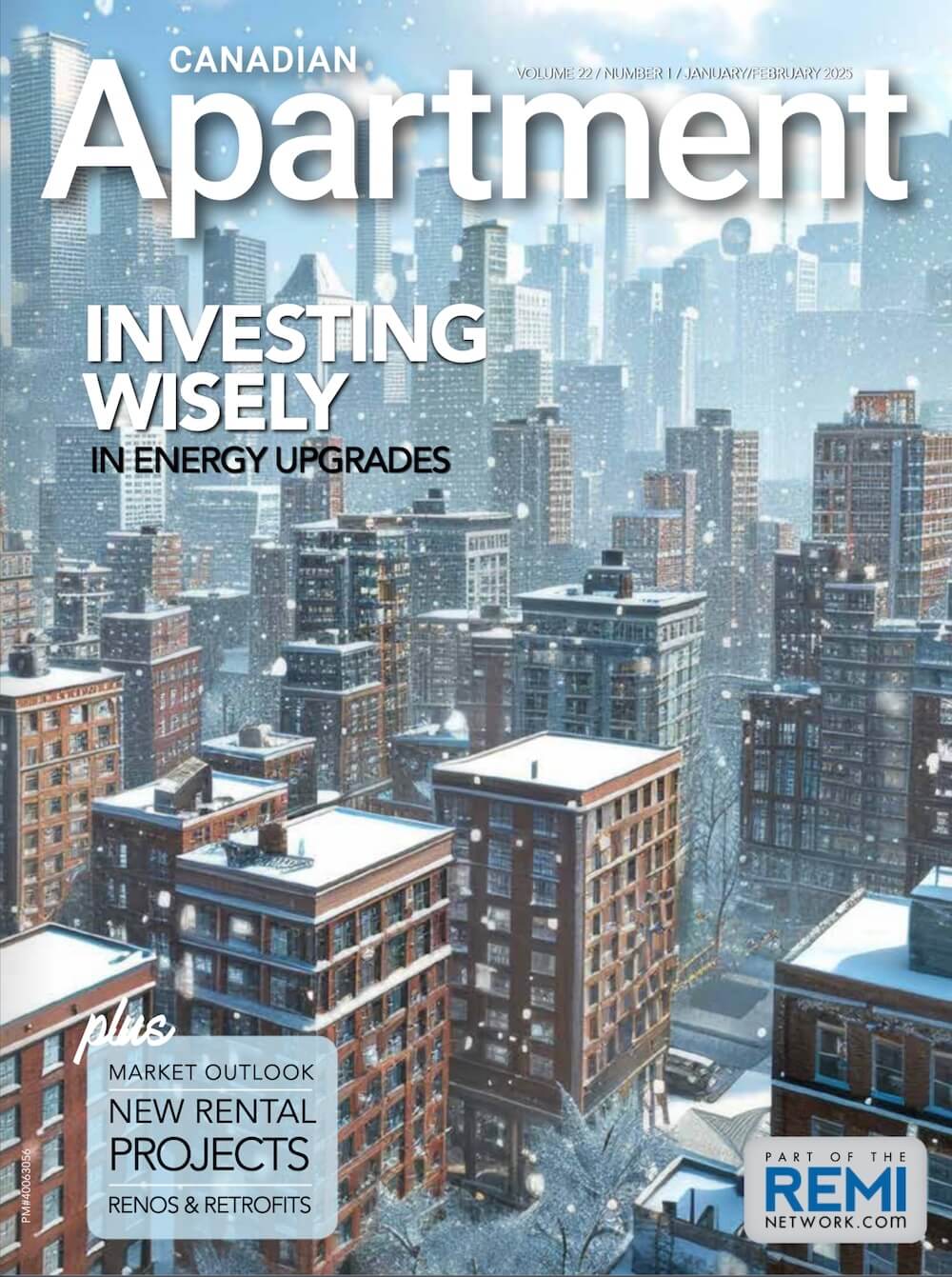For most people, the word “flood” conjures images of large-scale natural disasters like the Southern Alberta flood of 2013 or the Fort McMurray flood of 2020. While climate change has increased the prevalence of these weather-induced disasters, floods caused by plumbing and appliance failures happen daily—and sadly, they are often preventable.
All-tolled, flooding is the leading loss driver for real estate owners in Canada, making it all the more surprising that the majority of property owners are not prepared for it when it occurs. According to findings from a recent national survey, 57 per cent of Canadians said they have not taken any steps to protect their property in case of a flood, while a similar number indicated they are “not concerned” about the portential for water damage in the future.
For apartment owners seeking to renew their insurance policies, the difference between sinking or swimming often comes down to whether improvements have been made to the building’s plumbing infrastructure or whether a water risk mitigation plan has been implemented. In other words, preventing water damage should be high on every apartment owner and property manager’s list of concerns.
Consider this common scenario:
A tenant on the fourth floor experiences a flood due to a leaky pipe or a toilet malfunction, and subsequently, every apartment unit below it now has water damage. Costs in this case would add up very quickly. To make matters worse, a majority of Canadians wrongly assume their insurance will cover them. What’s more, the average insurance claim for water damage costs about $10,000—not an insignificant sum.
For owners of newer multifamily buildings, don’t think you’re immune to this scenario. In addition to tenants potentially being negligent, infrastructure problems can create their own risks—from aging pipes and poor water chemistry to improperly installed plumbing systems.
But water damage doesn’t have to be a big deal, provided it’s not an annual occurrence. Insurers look carefully at a property that files annual claims for water damage, and they may either increase insurance premiums or deny coverage outright. As a result, many buildings require tenants to carry full policies covering property and liability, which transfers the liability from the building owner to the tenant. After all, the main exposure for tenants is damage to contents.
Going back to the scenario above, if each tenant has appropriate coverage, the tenants living on lower floors are covered by the insurer of the fourth-floor tenant.
A proactive approach:
Some losses can be managed through tenant coverage, but the apartment owner and property manager are still responsible for taking care of building-wide issues, such as the plumbing system. Insurers may prefer certain plumbing systems over others, but insurance premiums will depend largely on the size of the deductible (retained risk), and the risk mitigation strategies that are employed.
Here are five steps every building owner should take to lower their risk of losses due to water damage:
- Perform a cost-benefit analysis. Make sure you know what kind of plumbing you have in your building and determine if it needs to be corrected or updated. This may involve completely replacing the system, or it may simply require replacing fittings or certain pipes. Learn about the different plumbing systems to ensure you are making the right choice for your apartment building.
- Create a water damage mitigation plan. Planning ahead helps in very situation and knowing what to do after a flood is no different. Find a water remediation expert you trust and keep their contact information handy. The larger the damaged area, the more expensive the repair. Make sure you call that expert the moment you notice a problem to minimize the cost. Templates are available to create a simple Domestic Water Emergency Response Plan (DWERP). Pro tip: Secure business interruption insurance just in case you need to shut down the building and send your tenants elsewhere. Your plan can also include strategies for keeping the building open.
- Perform regular maintenance. When the experts regularly inspect your apartment building, you may be able to avoid several issues completely. Schedule routine inspections of plumbing infrastructure, especially as part of an insurance renewal application. The inspector should look for leaks and sewer pipe backup, as well as confirm that sinks and tubs are draining properly and that the water pressure is calibrated correctly.
- Monitor equipment. A huge number of claims come from damaged equipment, but again, inspecting the equipment regularly can keep problems at bay. Be sure to schedule routine maintenance and monitor of all your equipment, regardless of its age or status.
- Increase the deductible. For some apartment building owners, choosing a policy with a higher deductible is the right way to go. This strategy leaves the owner responsible for a larger amount of claim costs, but it also means a lower premium. This works primarily with well-maintained buildings, so consider your circumstances carefully before taking this step.
You wouldn’t wait for a fire to burn down your building before learning about fire safety; don’t wait for a flood before learning about water damage mitigation. Every plan you make now will help you manage your risk and keep costs manageable.
 Chris Della Mora is a senior risk consultant, located at the HUB Toronto office where he supports regional and international activities. He currently runs the Manufacturing specialty group within HUB’s Risk Services Division, and has a focus on helping clients reduce their property loss exposures.
Chris Della Mora is a senior risk consultant, located at the HUB Toronto office where he supports regional and international activities. He currently runs the Manufacturing specialty group within HUB’s Risk Services Division, and has a focus on helping clients reduce their property loss exposures.







Nice post